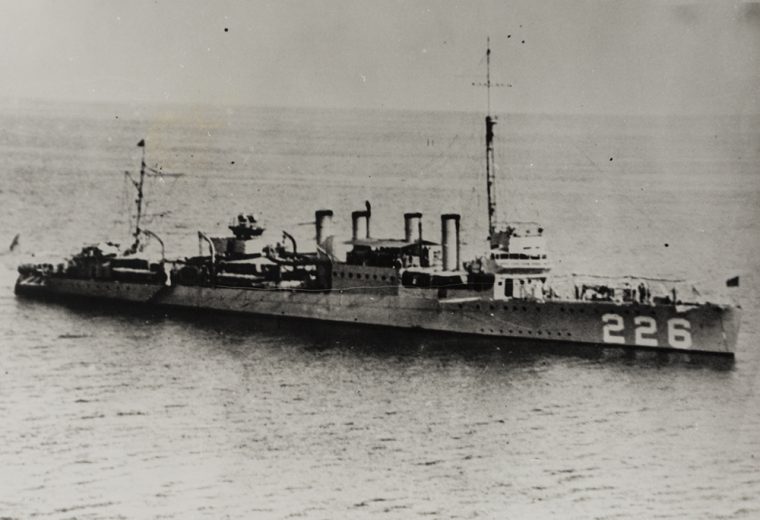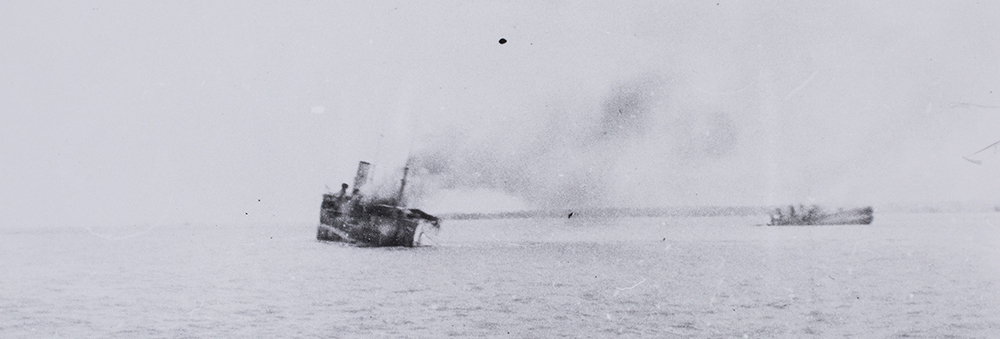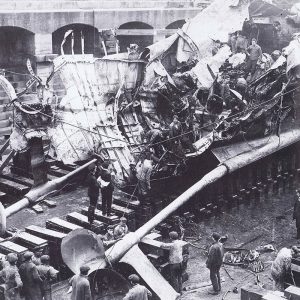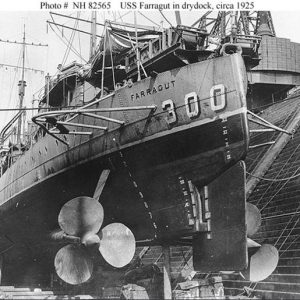USS Peary propeller discovery in Darwin Harbour


The discovery by a local diver of two large ship propellers on the sea floor of Darwin Harbour has offered a completely new interpretation of the events around the sinking of USS Peary on 19 February, 1942.
The propellers appear to be made of bronze, are about three metres in diameter and form part of an extensive debris field. They cannot be matched to any ship known to have been lost in Darwin Harbour, other than USS Peary.
The Northern Territory Department of Tourism, Sport and Culture’s Heritage Branch believes that the shattered stern of USS Peary has been discovered in Darwin Harbour, lying some distance from the main wreck site.
USS Peary, a Clemson-class destroyer, was sunk after suffering direct hits from as many as five Japanese bombs. Ninety US servicemen are believed to have gone down with the ship.

It is known that the first bomb to hit USS Peary was a direct hit on the stern.
The discovery of the propellers gives reason to believe this hit caused a large section of the stern to break away from the ship, including the propellers, causing USS Peary to drift completely disabled on the rapidly moving outgoing tide as it continued to take hits from enemy bombs, before eventually sinking.
The Australian and Northern Territory governments are coordinating with counterparts in the US Naval History and Heritage Command regarding this significant discovery. The main wreck site lies in deep water off the Darwin Esplanade. It was salvaged by the Japanese Fujita Salvage Company in the early 1960s. Most of the sunken ship was cut into pieces and removed.
The Heritage Branch intends to conduct further research on the site, and the NT Government will consider statutory protection as appropriate.
All artefacts from USS Peary are automatically protected by the Commonwealth Underwater Cultural Heritage Act 2018. Interference with any artefact can attract a penalty of up to five years in prison or fines of up to $63,000.
Quotes by Department of Tourism, Sport and Culture, Director of Heritage Division, Michael Wells
This discovery has forced us to completely review what we thought we knew about the loss of USS Peary. It also forces us to confront what a terrible experience it must have been to be on board Peary when it was attacked.
We now believe the ship was completely disabled after the first bomb hit, and thereafter was drifting helplessly. It was a ‘sitting duck’ for further attacks. It underlines the incredible courage of crew members, who we know continued to fire the ship’s guns in an attempt to defend the ship from attack.
We are very grateful to local diver Grant Treloar for coming forward with information about this discovery.
Mr Treloar’s actions will enable a thorough investigation of the site prior to it being disturbed in any way, and will enable well-informed decisions to be made about how to deal with the valuable artefacts that have been discovered.
This discovery is important from an archaeological perspective. It changes our interpretation of the wrecking event, and about where the remnants of Peary are. More survey work and research will need to be done to recreate the events of the day, and to locate other remnants of Peary, which could be scattered along a corridor on the floor of the Harbour from where it was first hit, to where it eventually came to rest.
Northern Territory Department of Tourism, Sport and Culture



